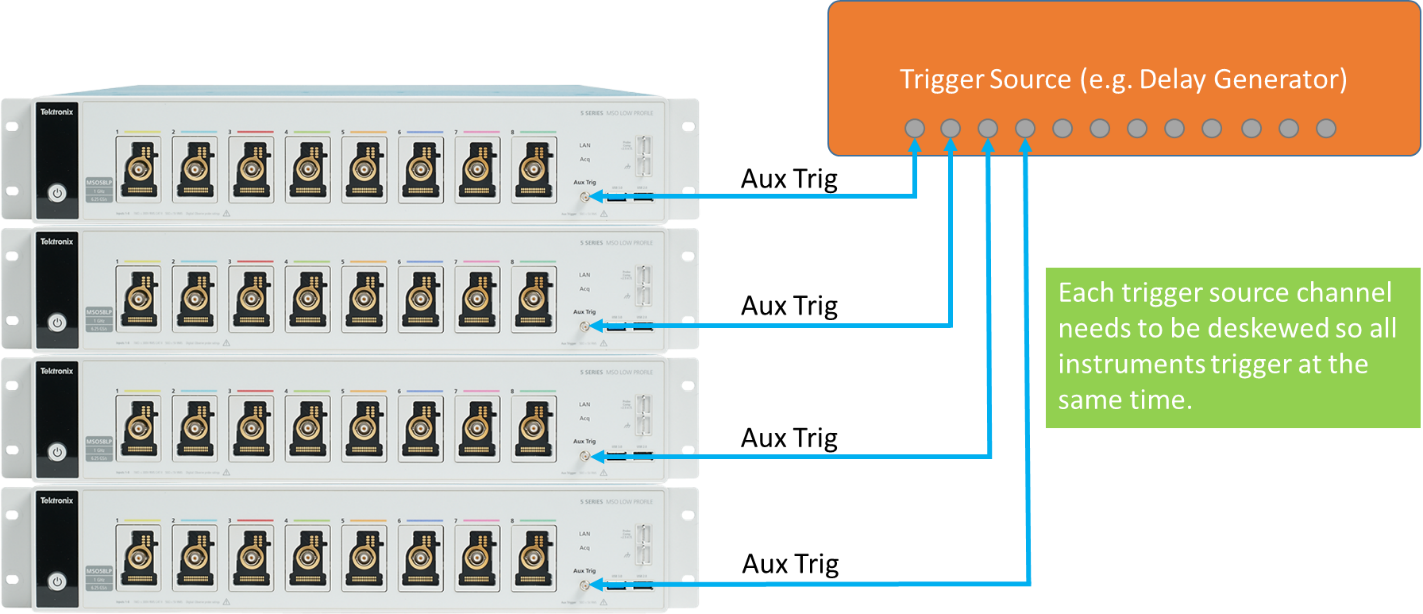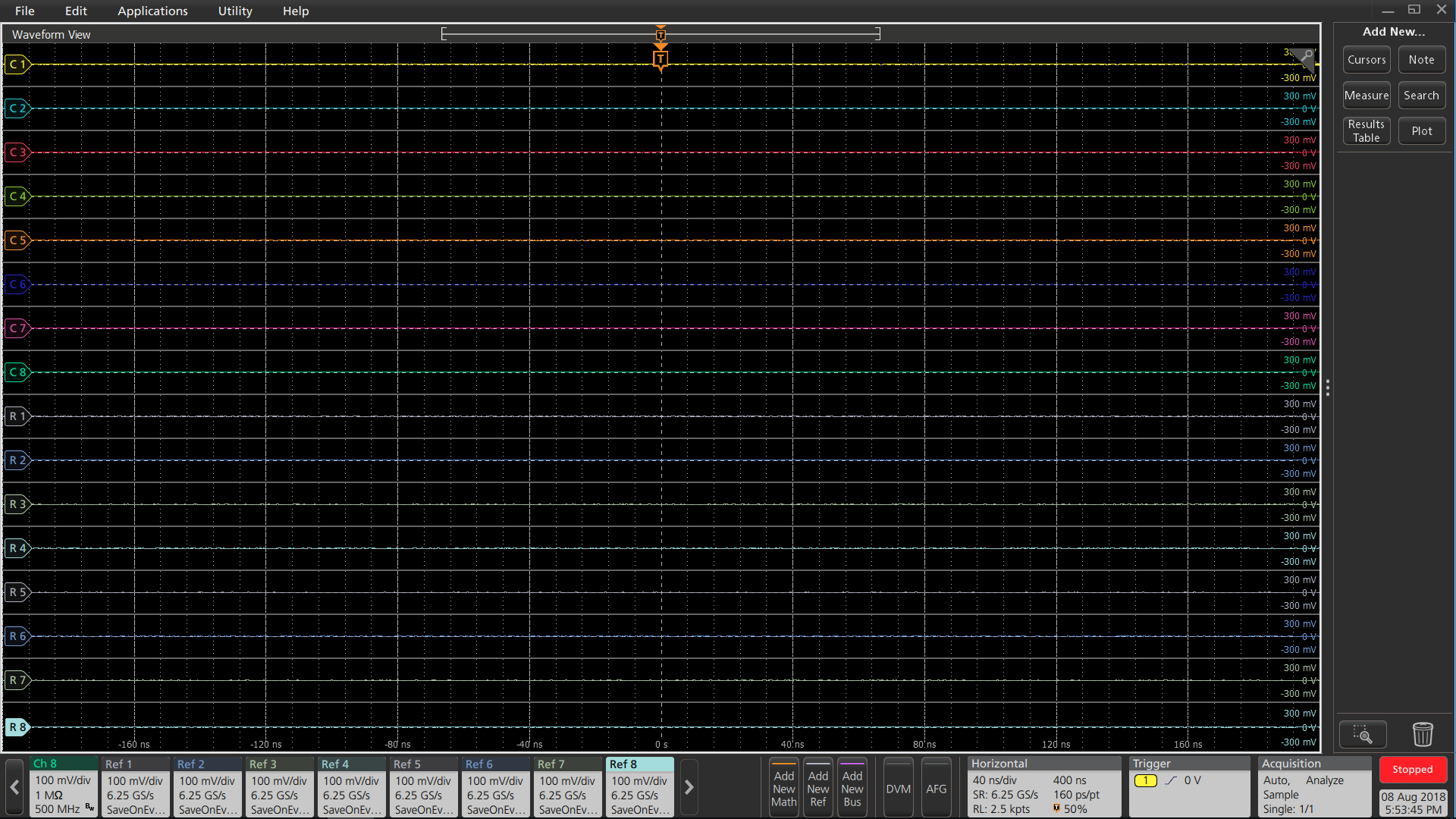

By Brian Hensley
What are the differences between a high speed digitizer and an oscilloscope and how do you know which one is the right fit for your application? Fundamentally they both take analog waveforms and convert them into digital data through an Analog to Digital Converter (ADC). Then the data is stored into memory to be saved, analyzed or streamed to a PC. So, is the primary difference a screen, size or form factor? What if we removed the oscilloscope screen, is it a digitizer now? Maybe…
In November 2017, Tektronix launched the 5 Series MSO Low Profile oscilloscope -- a 2U rack-mounted 8-channel oscilloscope that’s built on Tektronix latest ASIC technology. It delivers a new form factor optimized for performance and channel density. With digitizing bandwidths of 1 GHz, enhanced by a new low noise front end and a 12-bit ADC. It has all the features of a high speed digitizer -- but with the added advantage of oscilloscope measurements and capability including power analysis, jitter analysis and serial bus decoding along with a wide selection of probes for specific measurement applications.

What matters most?
System integrators, technicians and engineers, anyone programming and automating a system, will work through similar growing pains when adding new stuff to their rack system. The list of requirements may be long, whether you’re validating a low voltage signal, need a multichannel system, requiring high dynamic range or high signal fidelity, or maybe you require high repeatability and reliability. It commonly comes down to three key factors:
Signal Integrity. Channel Density. Costs.
Breaking down these will help you understand the primary differences between AXIe or PXIe digitizers vs. a low profile oscilloscope.
What are AXIe or PXIe digitizers?
Modular based, high speed digitizers provide an assortment of capability based on performance and cost. These different styles follow standards; typically referred to as VXI, PXIe and AXIe. The most common being the last two. These card-based systems follow consortium standards for open interoperability, integration and form factor. And all three require the addition of a chassis, embedded controllers or a local PC to communicate and offload data. The modular cards communicate with a PCI Express backplane which allows for transferring data between cards, triggering and more. One of the primary benefits is the ability to mix and match equipment from a variety of different vendors. For example, anyone needing a signal generator, synthesizer, down converter, digitizer, power supply, or optical modulation, can mix and match cards to fit within a single chassis system. This concept is quite popular in certain markets and allows the custom assembly of a personalized test system for very specific test requirements.
Some benefits of AXIe and PXIe can be their downfall. For instance multichannel systems which require high bandwidth will typically cost a lot more per rack unit then a typical oscilloscope and the 5 Series MSO Low Profile widens that gap with high performance.
What are the primary differences between AXIe and PXIe?
AXIe in the image below is commonly described as the big brother to PXIe. Whereas PXIe as shown in the second image uses smaller module cards and is somewhat limited in terms of board real estate and power. Thus AXIe with its larger form factor provide more space, power allowing more complex cards.


What is the Tektronix MSO58LP Low Profile oscilloscope?
Tektronix architected a new 25GS/s 12-bit ADC as part of a new ASIC technology. The ASIC launched in an award-winning oscilloscope, the 5 Series MSO and later was built into the 6 Series MSO. The 5 Series MSO Low Profile uses the same chipset, same hardware design, but is optimized for high channel density and affordable costs per-channel. It was designed for multichannel environments, programmatic automation and for anyone needing to monitor test systems remotely. With its built in LXI style landing page, you can access the full power of a modern oscilloscope by entering your IP address into a browser. A popular favorite from customers!

The MSO58LP key specifications:
- 8 FlexChannelTM inputs (1 analog or 8 digital each)
- Aux trigger input
- 1 GHz Bandwidth
- 6.25 GS/s and 125Mpts per channel (analog or digital)
- 12-bit ADC (4,096 digitizing levels)
- 2U rack mounted – standard configuration is rack ready, optional bench conversion kit
- Connect up to 8 probes (IsoVu, high voltage, low voltage, current probes)
- Closed Embedded Linux OS
- Programmers manual, LabVIEW, IVI-COM drivers, sockets, VISA, MATLAB, Python, C/C#/C++
- Remote browser control of instrument – simply enter the IP address into a web browser
If you need a multisystem setup, the Low Profile scope can be time synchronized between instruments to within 350ps using a variety of methods (see two images below).


For users seeking to view multiple channels from across multiple scopes, mounting a network drive between them can serve as an easy way to pull up and analyze reference data across many instruments.

Comparing Performance, Costs and Channel Density
At the end of the day, most will make recommendations to their management team based on performance, costs and channel density. Here’s a quick look at how digitizers compare.
Digitizer performance, known as signal integrity often gets questions like ‘How many high bandwidth, high sample rate channels do I get?’ and ‘What is the vertical resolution of the digitizer?’ or ‘Does this digitizer performance degrade with channel count?’
The Tektronix 5 Series and 6 Series oscilloscopes offer high bandwidth, up to 25x over sampling and large record lengths on all channels (analog or digital). Matched with the industry’s fastest 25GS/s 12-bit ADC, you will see more signal detail with the lowest noise systems, more digitizing levels than before allow for more accurate measurements and larger dynamic range. Coupled with state of the art INL/DNL calibration, flatness correction, digital trigger and more, these instruments have the next generation of performance. Compared to AXI or PXI digitizers, who always sacrifice bandwidth and sample rate when more channels are turned on.
So what about comparing costs and density? Well depending if you need 16, 64, or 100+ input channels, pretty quickly you’ll be wanting to know, “Do I get the performance at the right cost per channel?” So I recommend take a look at two common digitizers versus the Tektronix Low Profile scope in the table below.

As you can see in the table above, it’s best to compare costs and performance and then get a demonstration from your local account manager before making your purchasing decision. If you’re accustomed to thinking it comes down to selecting between AXIe or PXIe for high-channel count digitizer applications, it may be time to a consider a third option, the 5 Series MSO Low Profile scope, which can save money, rack space while also giving you the best performance on all channels.
References
https://www.edn.com/electronics-blogs/test-cafe/4429243/AXIe--It-really-is-big-brother-to-PXI
http://www.vxibus.org/files/q407-vxi-as-an-established-bus.pdf


